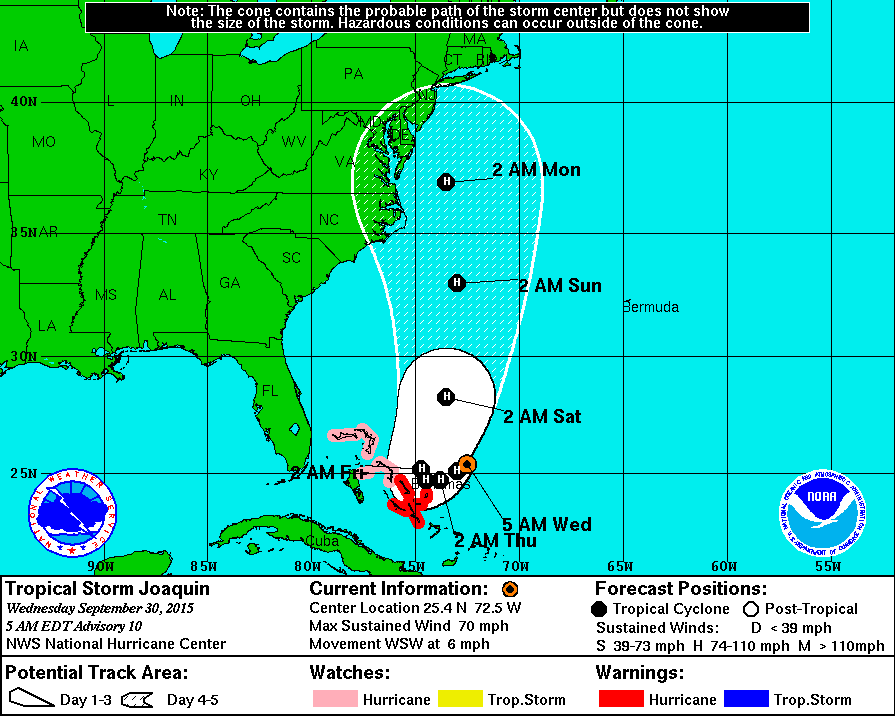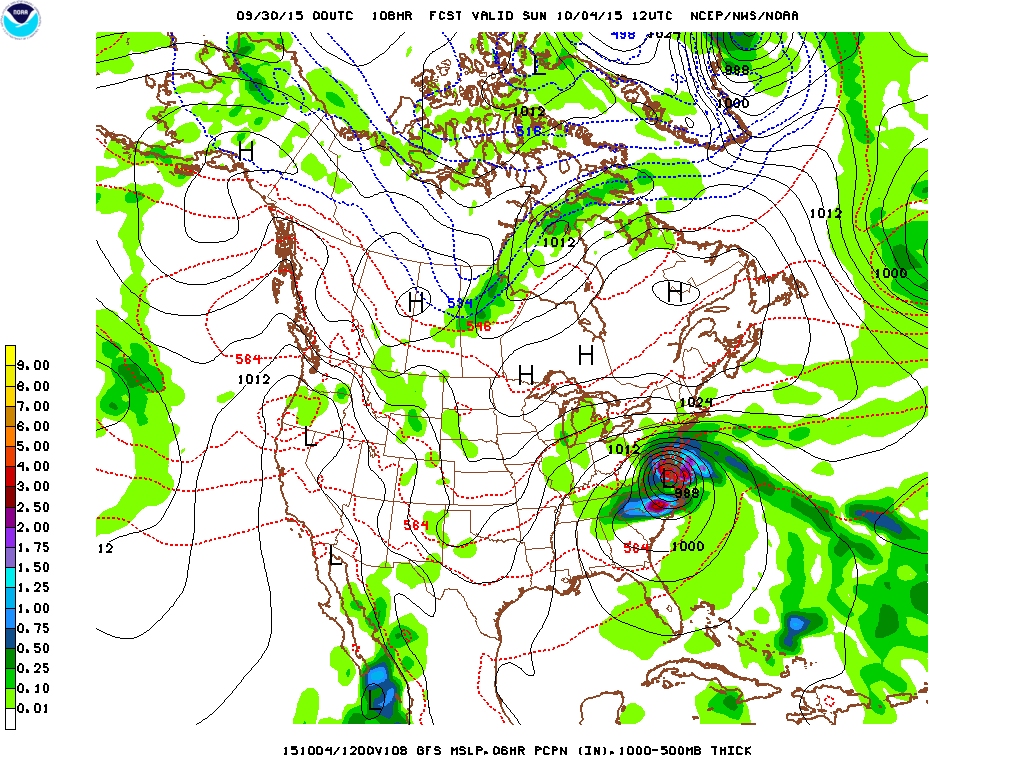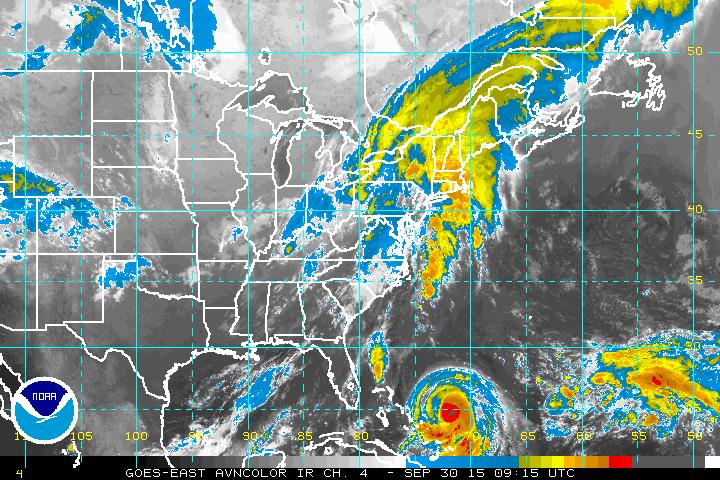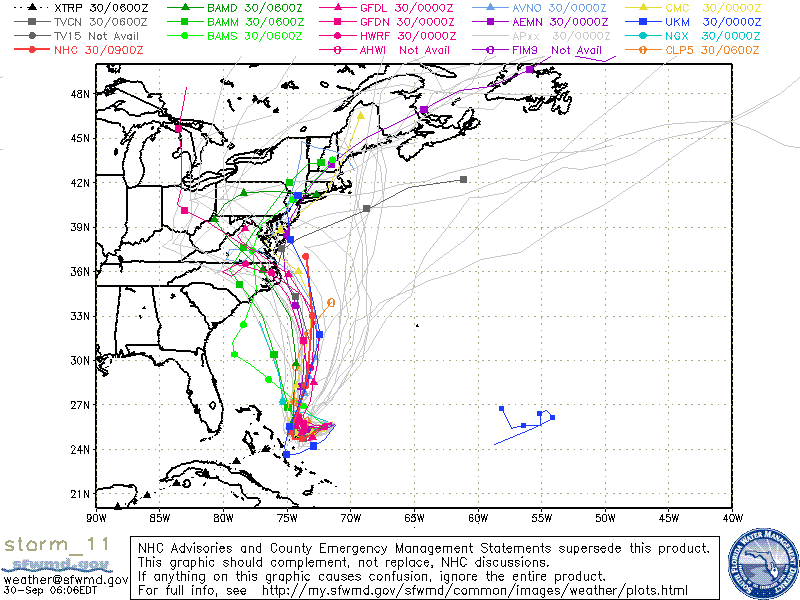September 30, 2015 Why you have to pay attention with an El Niño enhanced season.
Alert, Alert, East Coast, Alert, two consecutive model runs with disturbing outcomes.
A below normal hurricane season does not mean absolutely no hurricanes.
So perhaps, here comes our one problem storm of the season.
Joaquin is not only forecast to be a Hurricane, but a Category 2 Hurricane late Friday
INIT 30/0300Z 25.8N 71.7W 60 KT 70 MPH
INIT 30/0900Z 25.4N 72.5W 60 KT 70 MPH
12H 30/1800Z 25.1N 73.0W 70 KT 80 MPH
24H 01/0600Z 24.7N 73.8W 75 KT 85 MPH
36H 01/1800Z 24.7N 74.5W 80 KT 90 MPH
48H 02/0600Z 25.2N 74.7W 90 KT 105 MPH
72H 03/0600Z 28.3N 73.5W 95 KT 110 MPH
96H 04/0600Z 33.0N 73.0W 85 KT 100 MPH
120H 05/0600Z 37.0N 73.5W 80 KT 90 MPH
Above are National Hurricane Center forecast positions for the next five days.
A 90 mph Hurricane 100 miles east of Virginia Beach late Sunday night.
But, this is the Sunday morning forecast 12z Oct 04 from GFS model 00Z run Wed Sept. 30.
In a nutshell, that is Hurricane Joaquin sitting inland over Southeast Virginia.
This current run hooks Joaquin into Virginia very reminicent of the way Sandy went into New Jersey in October 2012.
It is NOT the official forecast, just a most recent model solution.
It certainly could be two consecutive bad runs of the model, but it could also be a new forecast trend that would have great impact on the fragile Mid-Atlantic coast.
Joaquin is the red blob east of Miami in this early morning picture from Wednesday Sept. 30. That little patch of blue over Missouri marks the next shortwave expected to settle into Alabama and Georgia stearing Joaquin north along the U.S. Coast.
Potential serious stuff for the Middle Atlantic Coast this weekend, but also a great heads up for all of us . The enhanced El Niño season has begun.
Wild Bill
latest spaghetti runs also show a westerly hook



